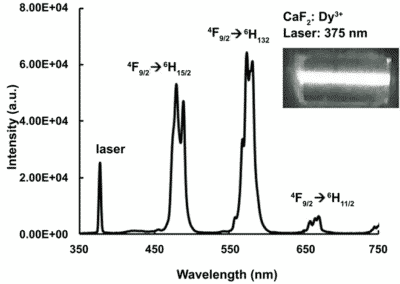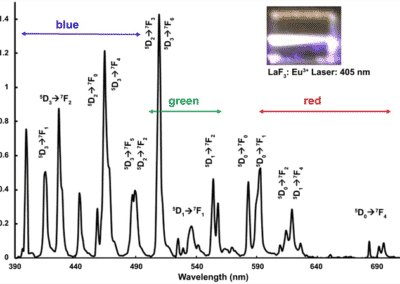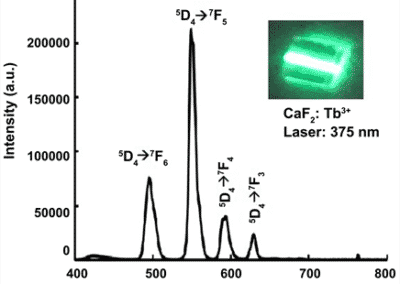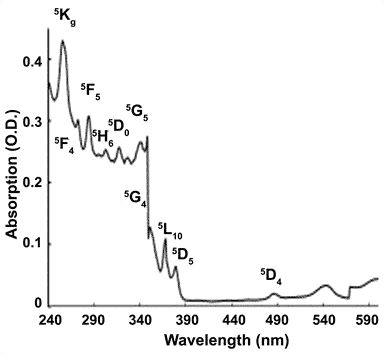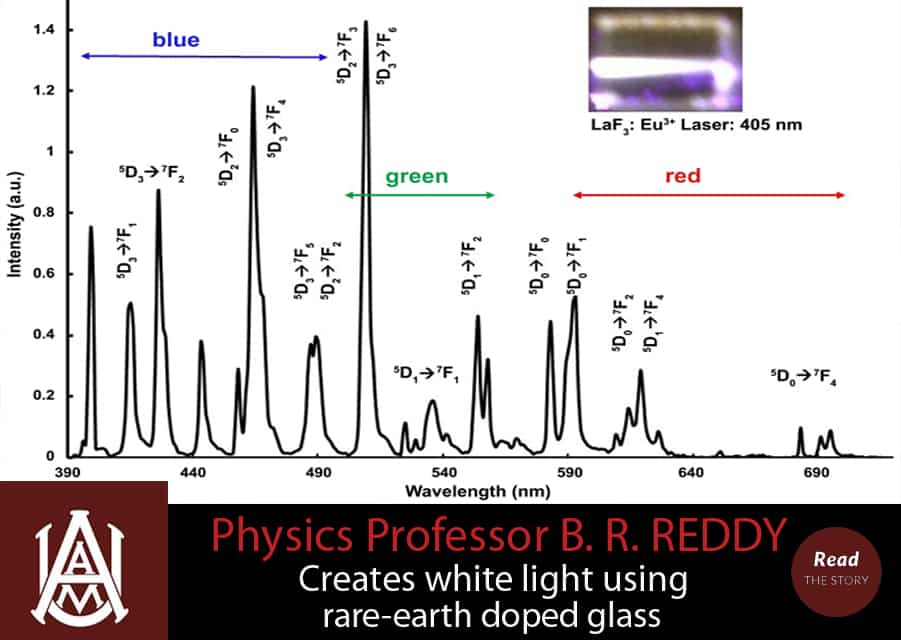
The sun’s light shines down upon the earth, but if you are inside, it’s difficult to replicate the sun’s color using current residential lighting technologies. Almost 20% of the electricity used at home is from lighting. There is an ongoing global effort to design light sources that reduce the energy draw of residential lighting. Solid-state lighting is an attractive option, says B. Rami Reddy, PhD., a Professor of Physics at Alabama A&M University, because “Solid-state lighting is robust, long-lasting, energy efficient, and compact.”
Dr. Reddy and his team are working to develop solid-state lighting which can mimic the true color of sunlight. “What we are doing is doping glass with rare-earth elements, and using the doped glass and a diode laser to create white light,” he said. In order to get a white light that is closer to the color of sunlight, three different colors need to be emitted to combine to the right pure white.
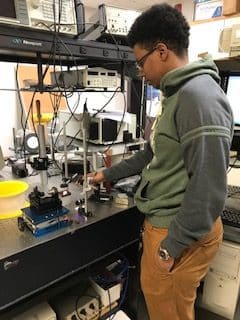
Some of the rare-earth ions possess numerous energy levels and emit in the visible and infrared wavelength regions. Because of characteristic spectral features, materials embedded with single, double or triple dopants, emit different colors. White-light sensation occurs whenever the three primary colors are mixed in various combinations. In a recent paper, Dr. Reddy’s team showed specific rare-earth doped fluoride phosphors that produce white light under diode pumping.
Performance of the rare-earth doped fluoride phosphors were evaluated by measuring the color coordinates and CCT. Reddy’s team uses the StellarNet Black Comet, and the SpectraWiz software, to take measurements and create color charts.
Dr. Reddy’s group’s studies indicate that the color coordinates of Dy3+-doped CaF2, Eu3+-doped LaF3 and Tb3+-doped LaF3 are close to that of sunlight and hence these materials are ideal for the development of diode pumped solid state white light emitters. Only low concentrations of the dopant ions are needed as higher concentrations of the dopant will lead to concentration quenching. The team’s results indicate that rare-earth ion doped phosphors have potential applications for solid state lighting.
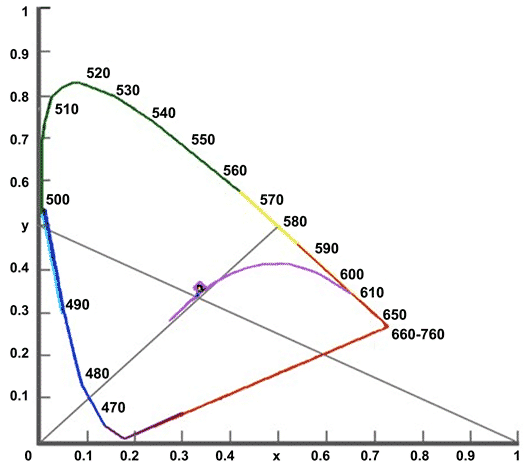
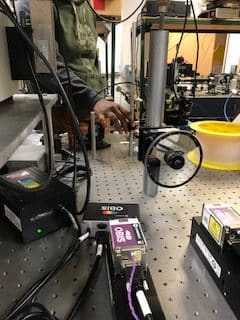
Dr. Reddy sees the StellarNet team at conferences and shows, and often stops to chat. When asked why he bought the spectrometer from StellarNet, he laughed and said, “Because they gave me a good deal!”
He followed that us with, “It is a rugged instrument, we’ve been using it regularly for three years now.” Both he and his students use the StellarNet BLACK-Comet, and when asked, he said that his students find it very quick to learn and easy to use.
On of his recent publications, “Characterization of Fluoride Phosphors for Diode Pumped Solid-State Lighting Applications” shows many of their results.
Dr. Reddy will be presenting his research on the, “Investigation of phosphate glasses for white-light emission” at OPTO2020, (The Optoelectronics, Photonic Materials and Devices Conference), held in conjunction with Photonics West in San Francisco this February 2020. To see Dr. Reddy’s SPIE profile and other research, go to https://spie.org/profile/Rami.Bommareddi-32243 .

